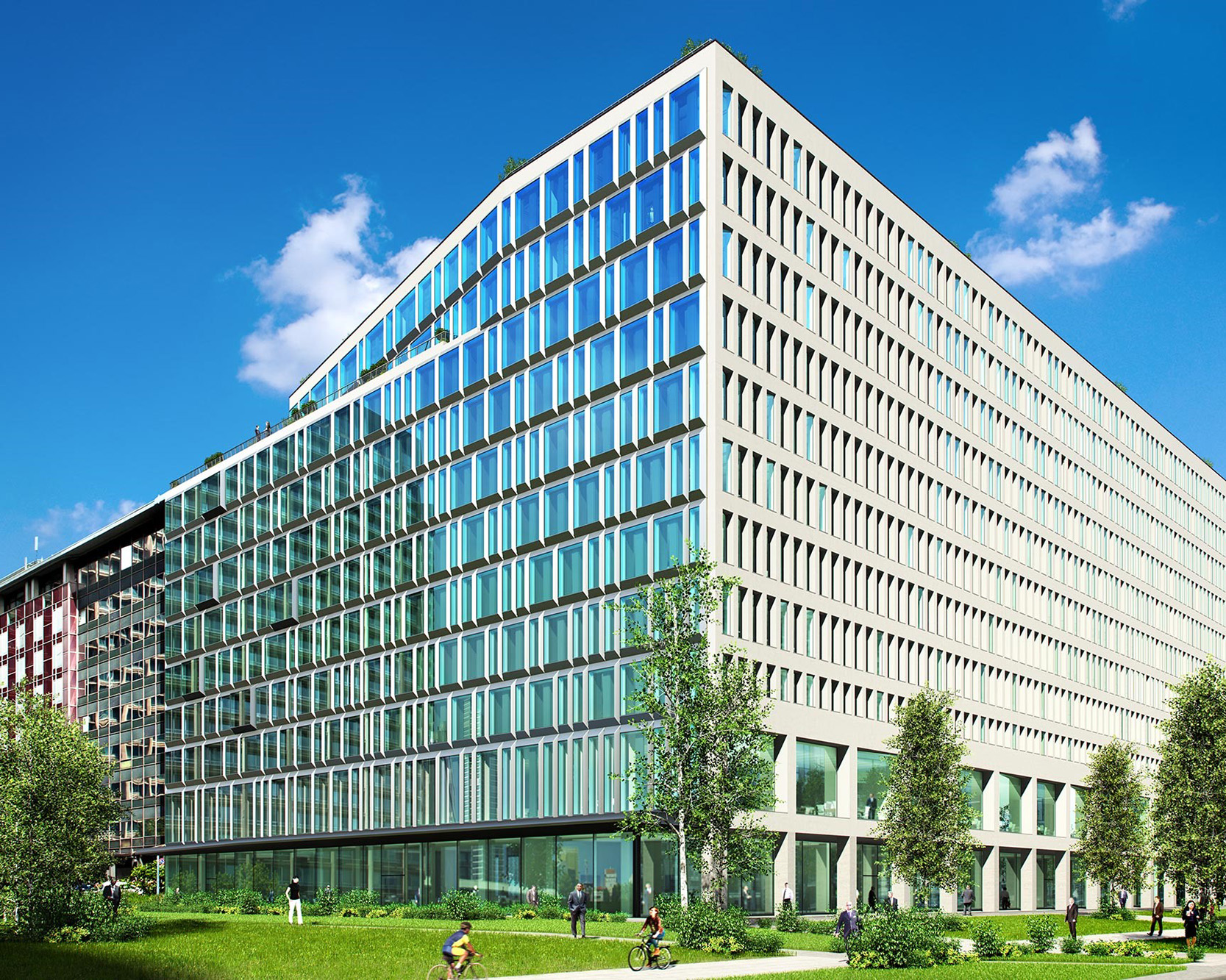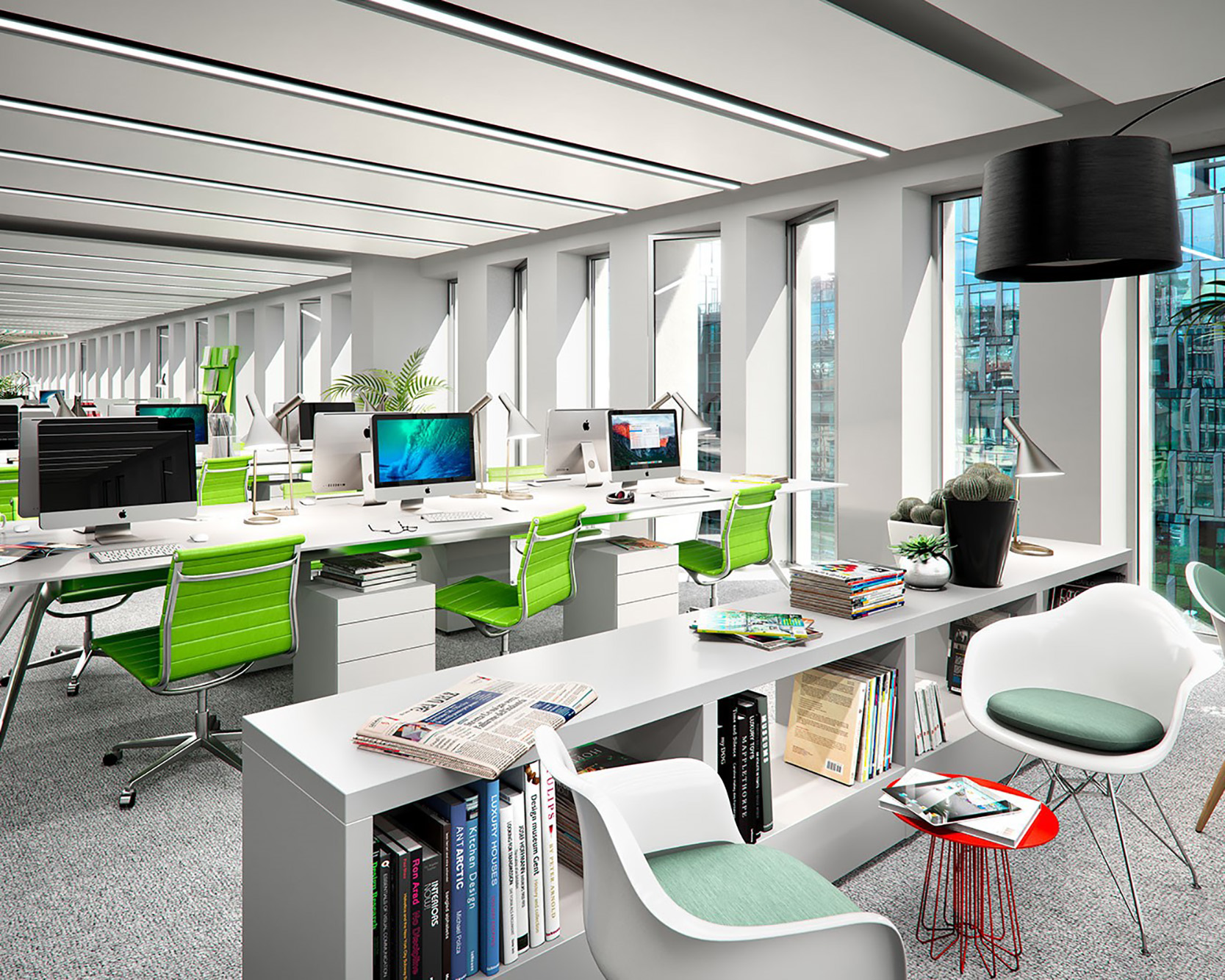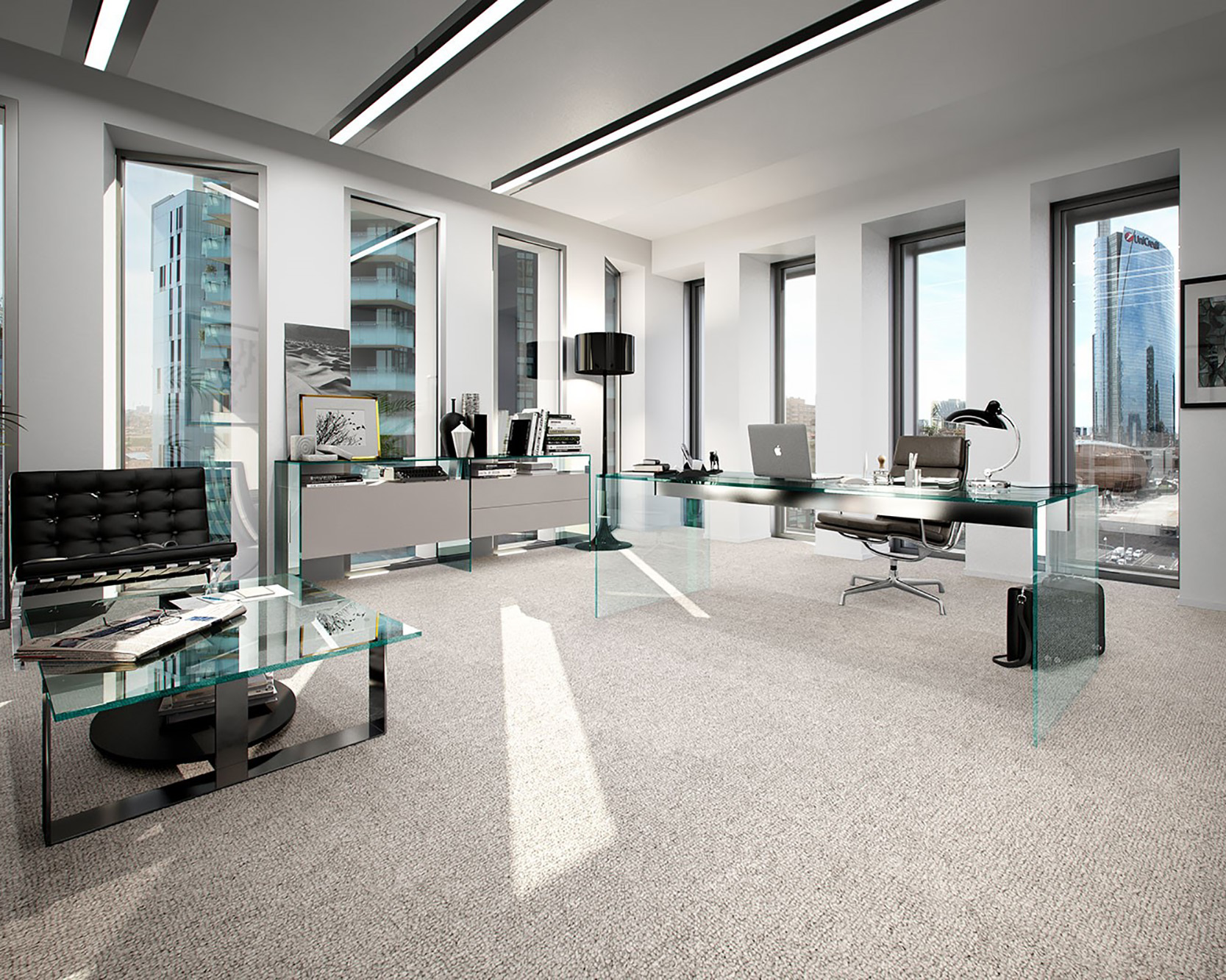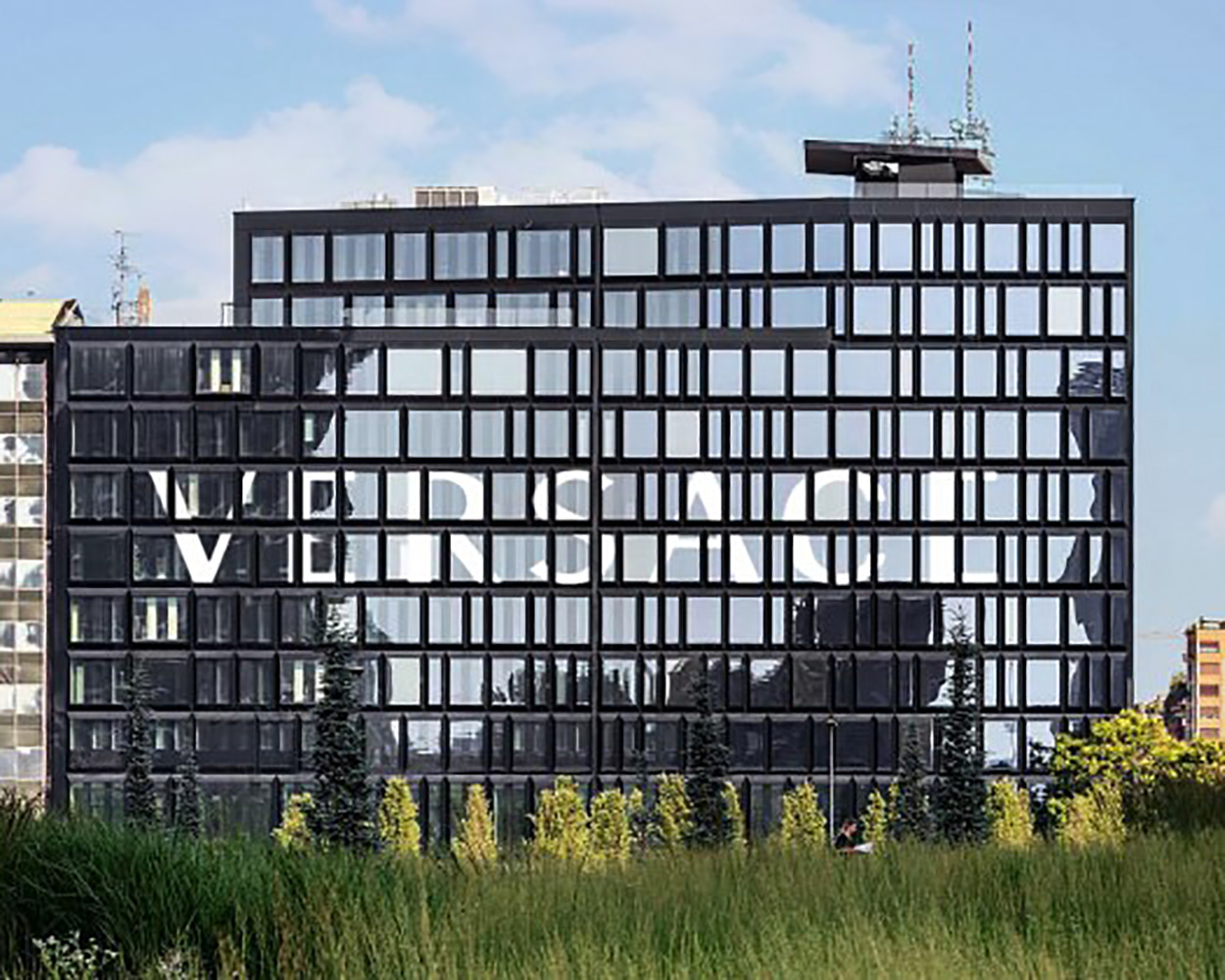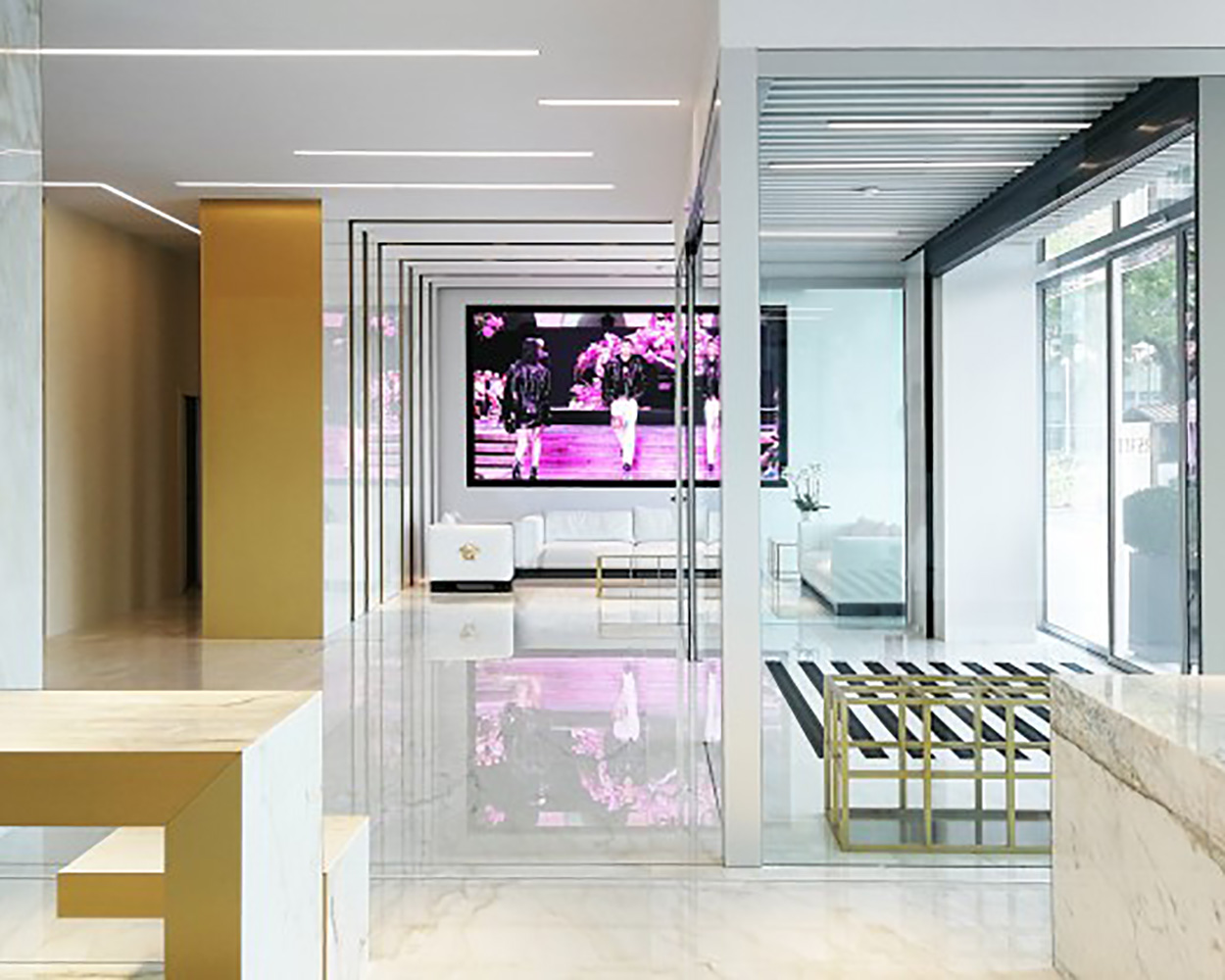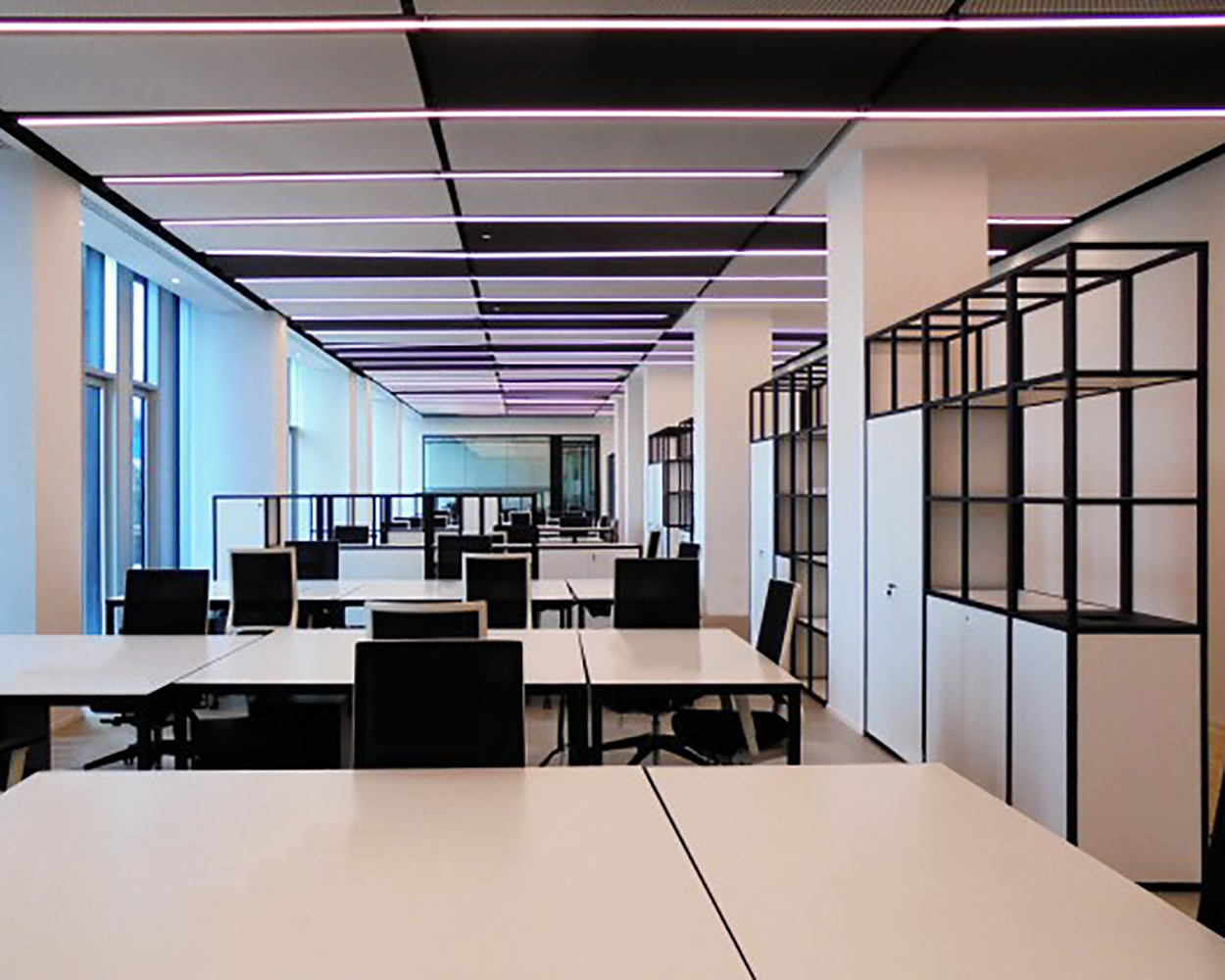| CLIENT | VERSACE/SPI |
| TITLE | VERSACE HEADQUARTERS, MILAN, ITALY |
| BUILDING | Building located at Via della Liberazione 16/18, Milan, Italy Total area of 10,000 m2 |
| Timeframe of service execution | 2017-2019 |
| ROLE in the service execution | Engineering design of electrical and mechanical systems, specialised works supervision and testing |
PURPOSE OF SERVICE
Electrical and mechanical system and special systems design, including works supervision, as part of the renovation of a multi-floor building located at Via della Liberazione 16/18, Milan, Italy, consisting of one ground floor and ten above-ground floors for office functions and related service rooms, as well as two basement floors for garages, technical rooms and archives.
HIGHLIGHTS
The project had to comply with the concept of sustainability being the primary goal of the client's corporate mission, who also aimed at achieving LEED certification. Therefore, all plant systems underwent the LEED Commissioning process held by the Commissioning Authority, following which the new building was successfully awarded the LEED Gold certification.
Contextual to the core purpose, both the prospective functional value of the systems and the peculiarities of the building structures had to be considered at the design stage. For this reason, while providing the proper functionality of systems, minimally invasive solutions were proposed in order to reduce demolitions for wirings, crossings and reconstructions to a minimum, while ensuring maximum flexibility allowing for a wide range of solutions meeting the client's requirements.
The systems were therefore designed in accordance with the following basic principles and guidelines:
- Energy efficiency of all planned systems and components, in full compliance with all standards, laws and regulations.
- Flexibility in the use of systems according to the different areas in the building.
- Heat recovery on installed systems.
- Use of renewable energy sources compliant with relevant regulations.
- Maximum effectiveness and attention to comfort and environmental well-being via the control of thermo-hygrometric and air quality parameters.
- Control, adjustment and supervision of systems to provide maximum comfort, energy saving and flexibility of use.
- Maximum attention to maintenance aspects aimed at optimising and streamlining maintenance operations.

